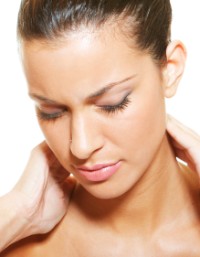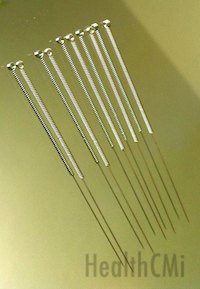Acupuncture is more effective than medication for controlling migraines. Researchers compared a Traditional Chinese Medicine (TCM) combination of acupuncture and tuina massage with the oral medication flunarizine hydrochloride. The TCM treatment was significantly more effective than the drug treatment for reducing pain frequency, intensity and duration due to migraines. The acupuncture combined with tuina group had a total effective rate of 93.8% whereas the medication group only achieved a 63% total effective rate.  Additionally, the acupuncture with tuina group had significantly fewer relapses. As a result of the findings the researchers conclude, “Combining electroacupuncture and local tuina can obtain better effect and lower relapse rate than oral Flunarizine Hydrochloride capsules in migraine patients.”
Additionally, the acupuncture with tuina group had significantly fewer relapses. As a result of the findings the researchers conclude, “Combining electroacupuncture and local tuina can obtain better effect and lower relapse rate than oral Flunarizine Hydrochloride capsules in migraine patients.”
Inclusion criteria for the research required patients to have headaches that lasted between 4-72 hours on one side of the head, unilaterally. Pain intensity levels needed to be moderate to severe with a pulsing sensation. The headaches must be aggravated by activities of daily living such as walking, climbing stairs, etc… or must at the very least cause avoidance of activities of daily living. In addition, the migraines need to include at least one of the following symptoms: nausea, vomiting, photophobia, phonophobia. Medical examinations must exclude organic causation including hypertension, hypotension, ENT disorders and internal organ disorders such as heart, brain and kidney disease. A total of 94 patients were admitted to the study in the outpatient department of the hospital and were randomly divided into the TCM group and the pharmaceutical medication group.
The acupuncture group received electroacupuncture at ashi points, Taiyang, ST8 (Touwei), GB13 (Benshen), Xuanlu (GB5) and GB41 (Zulinqi) on the side with focal pain. GB20 (Fengchi), GV20 (Baihui) and GV24 (Shenting) were needled bilaterally. Secondary acupuncture points were added for specific disorders. LR3 (Taichong), KI3 (Taixi) and GB43 (Xiaxi) were added for headaches due to liver yang rising. CV12 (Fenglong) and SP9 (Yinlingquan) were added for cases of headache due to phlegm-turbidity. PC6 (Neiguan), SP10 (Xuehai) and BL17 (Geshu) were added for cases of headache due to blood stasis. The treatment principle was to dredge the channels, remove pathogenic factors and stop pain.
The acupuncture treatments were applied in the seated patient position. Needles were 0.30 mm in diameter and 25-50 mm in length. Deqi sensation was evoked at the acupoints followed by 1 minute of sedating technique by either twirling or rotating. Electroacupuncture employed a sparse-dense wave and the frequency ranged between 2-100 Hz. Total needle retention time was 20 minutes and the acupuncture was applied once per day. One course of treatment consisted of 10 days. Two courses of treatment were applied with a 3 day break between courses of care. 
Tuina massage was applied with several techniques. One thumb tui pushing, na grasping, an pressing, rou kneading, saosan sweeping, fen parting and ca rubbing were all used as part of the manual therapy. Regions receiving tuina massage were at Yintang, Taiyang, GV20, GB20, ST8, TB20 (Jiaosun) and BL2 (Cuanzhu). Overall, the head received tuina care including the forehead and lateral sides at the gallbladder foot-shaoyang channel. Treatment was applied with the patient in the seated position.
The treatment and results were processed at the Community Health Service Center at the Acupuncture and Tuina Outpatient Department of the hospital. Acupuncture with tuina consistently outperformed the medication group. As a result of the findings the researchers concluded that acupuncture combined with tuina is effective for the treatment of migraines and is more effective than flunarizine hydrochloride.
Reference:
Guo, Qing, Yu Hua, Hai-qin Wang, Ying Li, and Quan Ji. "Therapeutic effect observation on combining electroacupuncture and tuina for migraine." Journal of Acupuncture and Tuina Science 12, no. 3 (2014): 174-179.


